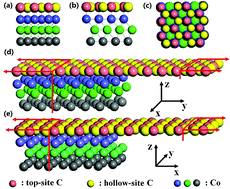Transient dynamics of magnetic Co–graphene systems
Abstract
We report the investigation of response time of spin resolved electron traversing through a magnetic Co–graphene nano-device. For this purpose, we calculate the transient current under a step-like upward pulse for this system from first principles using non-equilibrium Green's function (NEGF) formalism within the framework of density functional theory (DFT). In the absence of dephasing mechanisms, transient current shows a damped oscillatory behavior. The turn-on time of the magnetic Co–graphene nano-device was found to be around 5–20 femtoseconds, while the relaxation time can reach several picoseconds due to the damped oscillation of transient current for both majority spin and minority spin. The response time was determined by the resonant states below the Fermi level, but does not depend on the chirality of graphene and the amplitude of pulse bias. Each resonant state contributes to the damped oscillation of transient current with the same frequency and different decay rates. The frequency of the oscillation is half the pulse bias and the decay rate equals the lifetime of the corresponding resonant state. When inelastic phase-relaxing scattering is considered, the long duration oscillatory behavior of the transient current is suppressed and the relaxation time is reduced to hundreds of femtoseconds.


 Please wait while we load your content...
Please wait while we load your content...